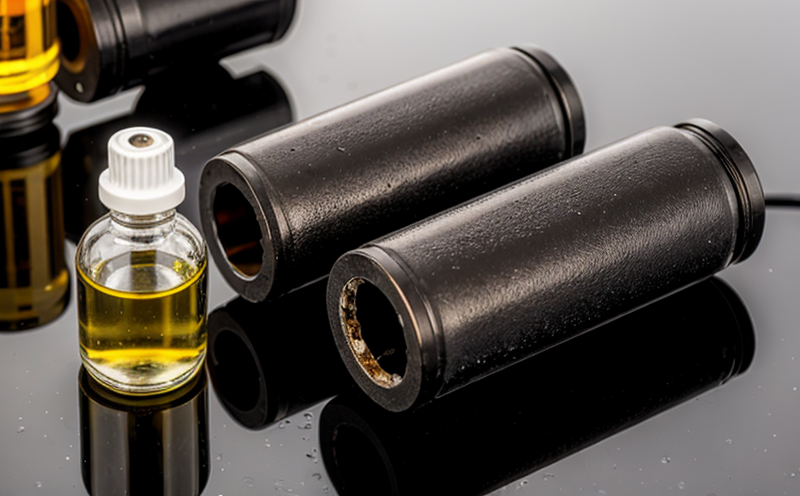ASTM D7678 Crude Oil Hydrocarbons Test in Water
The ASTM D7678 standard method is a critical tool used to quantify crude oil hydrocarbon content within water samples. This test measures the total petroleum-like hydrocarbon (TPHL) content, which includes both non-polar and polar components of petroleum and other similar compounds.
Crude oil hydrocarbons in water pose significant environmental risks, including toxicity to aquatic life and potential damage to ecosystems. The ASTM D7678 method is widely used for regulatory compliance, environmental monitoring, and research purposes. It helps determine the extent of contamination from spills or releases into surface waters.
Testing typically involves several steps: sample collection, conditioning (to ensure representative sampling), extraction using a solvent, and analysis via gas chromatography with flame ionization detection (GC-FID). The extracted hydrocarbon mixture is then quantified based on its retention time and peak area in the GC-FID output.
The ASTM D7678 method specifies stringent procedural requirements to ensure accurate results. Compliance includes using appropriate extraction solvents, maintaining temperature control during sample preparation, and adhering to precise instrument calibration procedures. The standard also provides guidance on handling contaminated samples safely and preventing cross-contamination between samples.
Interpreting the results involves comparing them against established environmental quality criteria or discharge limits set by regulatory bodies like EPA or local authorities. This comparison helps assess whether the water body meets acceptable levels of contamination, guiding corrective actions if necessary.
The significance of this test extends beyond mere compliance; it plays a crucial role in identifying sources of pollution and evaluating remediation efforts. By monitoring changes over time, stakeholders can track progress toward environmental cleanup goals.
Quality assurance measures such as proficiency testing programs further enhance confidence in the test results. Participating laboratories regularly submit samples for analysis by independent third parties who assess accuracy and precision.
In summary, the ASTM D7678 method provides a robust framework for quantifying crude oil hydrocarbons in water, supporting informed decision-making related to environmental protection and compliance.
Applied Standards
The ASTM D7678 standard is part of a broader set of methods that address various aspects of petroleum measurement. It complements other tests like ASTM D1070, which measures total petroleum hydrocarbons (TPH), and ASTM D4951 for determining the flash point of petroleum products.
Compliance with these standards ensures that testing practices are consistent across industries, promoting reliability in environmental assessments. By adhering to internationally recognized protocols, laboratories can provide credible data essential for regulatory enforcement and scientific research.
Eurolab Advantages
EuroLab offers unparalleled expertise in conducting ASTM D7678 tests, leveraging advanced instrumentation and experienced personnel. Our state-of-the-art facilities ensure precise extraction processes and accurate GC-FID analyses.
We maintain strict adherence to all procedural requirements outlined in the standard, guaranteeing reliable results every time. Our rigorous quality control measures include regular internal audits and participation in external proficiency testing programs.
Our dedicated team of scientists provides comprehensive support throughout the entire testing process, from sample collection advice to detailed reporting. This commitment to excellence sets us apart as a trusted partner for clients seeking accurate and actionable hydrocarbon data.
Environmental and Sustainability Contributions
EuroLab's work in ASTM D7678 testing contributes significantly to environmental sustainability by helping mitigate risks associated with crude oil spills. Our findings enable more effective monitoring and management of contaminated sites, contributing to cleaner waters and healthier ecosystems.
By providing reliable data on hydrocarbon concentrations, we assist regulatory bodies in enforcing stricter pollution controls. This not only protects natural environments but also promotes safer conditions for human populations dependent on affected water sources.
In addition to direct environmental benefits, our services support sustainable practices by facilitating informed decision-making processes that balance economic growth with ecological preservation. Through accurate testing and analysis, we help industries adopt greener technologies and practices while ensuring compliance with international standards.





